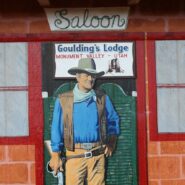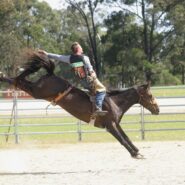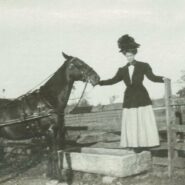
The Searchers is a Western standout, typifying the genre and going beyond it in the same move. By the time it was released in 1956, the Western had become a classic style of film, its familiar tropes, and themes established in preceding decades. Idealizing an aspect of American culture and ensuring that order triumphed over chaos, many Westerns slipped into simple narratives that held up heroes and villainized their enemies.
The Searchers both harnesses this spirit and questions it, breaking down the supposedly easy divisions in the genre. In the process, it taps into what is perhaps the true spirit of the West; an unknown frontier that holds both darkness and beauty, inciting both bravery and savagery in those who confront it.
The rundown
John Wayne, playing the lead role of Ethan Edwards, had of course done much to define the genre himself, starring in countless films and becoming nearly synonymous with the role of the Western hero. The character of Edwards continues this legacy, possessing many of the trademark features of a Western leading man. He is brave and battle-wise, with a mission to set things right in a demanding world. But he also has an ambiguous harshness acquired during his past as a soldier, a refusal to be tied down, and a sense of loneliness that alienates him from the rest of the characters. The result is a character that is as difficult as he is admirable.
The film’s basic plot follows the kidnapping of Debbie, Edward’s niece, by Comanche leader Scar and his followers. Shortly after returning home from his time as a soldier, Edwards’s brother Aaron and his family are killed or kidnapped in a Comanche raid. With the help of Martin Pawley, Aaron’s adopted son — who is, notably, one-eighth Cherokee — Edwards works to track down Debbie, the only remaining survivor. They manage to do so but find Debbie has become one of the Comanches and no longer wants to return with them. In reaction to her embracing of the tribe, Edwards attempts to kill Debbie and is only stopped by Martin; the rescue attempt is interrupted by the arrival of the tribe.
The pair manages to track down Scar once again, and Ethan and the Rangers mount an attack on the tribe. Martin meets Debbie and kills Scar to save her. Ethan reunites with them and Martin fears that he will try to hurt Debbie once again, but he seems to experience a change of mind and decides only to take her home.

Film analysis
A balance of themes
The result is a film that captures an adventurous chase but is also an examination of racism and revenge. Edwards is driven to extremes in his hunt for Debbie, and his behavior toward the Comanches is part revenge and part fanaticism.
His motivations certainly remain rooted in morality, preventing the film from becoming a simplistic study of bigotry. The hatred he has for the Comanches is justified by the chaos they’ve wreaked on his life, but no one is completely innocent here, and the difference between himself and his enemy is questioned.
A key point is that Edward’s knowledge of Native American culture and his understanding of their beliefs enables him in some cases to relate to them, but in others allows him to strike back at them where it hurts. One scene shows him committing the ultimate insult to a Comanche, shooting out the eyes of one of their dead warriors. Near the climax of the film, once Scar has finally been killed, he takes things a step further by scalping his corpse. Are such actions demanded by justice? And if so, does justice really advance us any further?
Edward’s eventual reunion with and acceptance of Debbie seems all the more complex as we consider his past actions. Here, he seems to act almost in spite of himself and acknowledges forgiveness. But his motivations remain unspoken, leaving us only to guess at his thoughts and emotions.
Not just a revenge story
Amid these questions, romantic subplots and comic relief help to round out the film. An Indian squaw accompanies them for a portion of their journey out of interest in Martin, which Edwards finds amusing, and Edwards’s friend Mose Harper appears in a funny role. Martin and his love interest Lucie also have an uneven journey that ends in a sweet reunion upon the return of Debbie.
Even without its more ambiguous elements, The Searchers is a great film to watch, with John Ford’s signature attention to landscape making for stunning visuals. It’s no question that the West itself plays a major role here, windy and bare but expansive and shocking, where violence can erupt suddenly. The dramatic scenes only serve to highlight the moral tension, capturing the thrilling and dangerous feeling of the chase.
Conclusion
For these and many other reasons, The Searchers has become an influence on many classic films. Ethan Edwards found a new incarnation in Martin Scorsese’s Taxi Driver, with the similarly troubled character Travis played masterfully by Robert de Niro. David Lean also used the film as inspiration for landscape shooting in Lawrence of Arabia. Elements of the film even made appearances in Star Wars, bringing the resonance of the wild west into space. And of course, the memorable last sequence is revered by critics and directors, a lasting picture of a man somehow left on the edges of what he’s worked to preserve.






